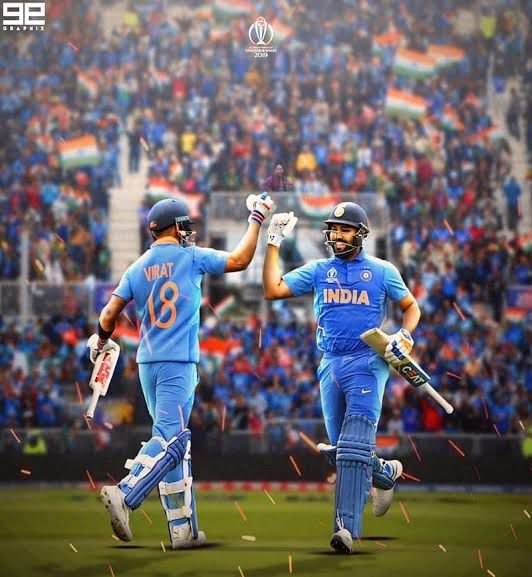Few stories in world cricket fire the imagination like that of Shafali Verma a teenager from Rohtak whose fearless batting and disarming honesty have made her the face of a new, bold era for India women’s cricket. As the highly anticipated ICC Women’s Cricket Tournament 2025 approaches, the question on every fan’s mind is clear: Can Shafali Verma’s redemption story culminate in greatness on the sport’s ultimate stage?
This in-depth look travels through Shafali’s incredible journey, setbacks and comebacks, and explores why her transformation is symbolic of the sport’s revolution in India.
Origin Story: Passion on the Streets of Rohtak
The Shafali Verma cricket journey is inextricable from the dusty by-lanes and humble rooftops of Rohtak, Haryana. Not born into privilege nor a typical player’s family, Shafali’s earliest memories are of sneaking into boys’ matches, wielding a rough-hewn bat, and bluffing her way onto local teams under the name “Sachin” (her idol).
By age 12, Shafali was making waves in age-group cricket, playing against boys, and shattering local records. Her aggressive, hand-eye-coordinated style was unconventional: where others saw risk, she saw opportunity. When her father, Sanjeev Verma a small shop owner took her to her first professional academy, he faced ridicule. Why train a girl for a “man’s game”? But the runs kept coming, and soon selectors for state junior sides could not ignore her prodigious returns and unmatched strike rate.
Breaking Barriers: The Indian Debut
Shafali’s rise was meteoric. In 2019, at just 15, she became the youngest woman to represent India in T20Is, breaking a 30-year record previously held by her hero, Sachin Tendulkar. Her debut against South Africa was no fairy tale dismissed after an early boundary, nerves visible. But within weeks, in the West Indies, she would hammer a 49-ball 73, earning instant comparisons with Sehwag and Viv Richards, celebrated for her clean hitting and joyful aggression.
In the months that followed, Shafali became a regular in India’s white-ball squads. She played a starring role in the 2020 T20 World Cup in Australia, top-scoring for India in the group stage and helping power the team into a historic final at the MCG. The image of a 16-year-old charging world-class pacers and dancing down against spinners captured the world’s imagination. Shafali was not just a prodigy she was a symbol of India women’s cricket rising stars, unafraid and unapologetic.
Trials and Tribulations: The Road Gets Rocky
But every ascent has its valleys. In the World Cup final, Shafali fell early, caught at cover after mistiming a drive. India collapsed, nerves fraying under pressure, and the dream ended in heartbreak. Critics were swift: does she lack technique against new ball seam? Can she build an innings when the boundary options dry up? The euphoria of her early rise now faded into the recurring question that shadows every teen sensation was she ready for the step up?
The next two seasons brought inconsistency. A string of single-digit scores in overseas conditions, occasional lapses in fielding, and the pressure of expectation tested her reserves. But true to the spirit of a Shafali Verma redemption story, the youngster did not shrink from hard questions. “It hurts. You see a highlight reel and think that’s all there is. But for every big six, there are days you just have to fight it out,” she reflected in one interview.
She doubled down on fitness, upped her off-side game, and worked one-on-one with India’s best coaches. Her IPL (Women’s Premier League) stint with Delhi Capitals under Meg Lanning saw her develop new gears tempered assault, smarter rotation, and leadership skills as opening partner and occasional stand-in captain.
Revival and Redemption: The 2025 Resurgence
By 2025, the “prodigy” tag has made way for “role model.” Shafali, now 21, is less the wide-eyed debutant and more the seasoned opener. In the years leading up to the ICC women’s cricket tournament 2025, she has racked up centuries against Australia, New Zealand, and England, becoming the first Indian woman to score hundreds in all three formats by 22.
Her technique is still dynamic but better rounded: she’s added drives through cover, deft dabs behind point, and crucially, patience to let the bowlers make mistakes. Fielding has also improved she now commands the rope, effecting run-outs and diving stops with confidence.
But what sets this phase apart is her resilience. After every low, Shafali’s response is “OK, back to the nets.” She credits this to her humble roots and to her father, who coached her through loss as well as fame. “You can’t just swing your way out of every problem. Sometimes, it’s about keeping your head when all around you lose theirs,” she remarked after a match-winning 70 in the Asia Cup semi-final.
Symbol of India’s Women’s Cricket Revolution
Shafali’s story is a microcosm of India’s changing relationship with women’s cricket. Just a decade ago, matches were played in front of empty stands and little TV coverage. Now, the WPL breaks viewership records, and young girls in Patna or Pune dream of playing alongside Verma, Mandhana, Rodrigues, and Ghosh.
Her endorsements, social media spotlight, and viral moments like dancing with kids after a win or giving her player-of-the-match medal to her idol Mithali Raj make her relatable and magnetic. Brands and grassroots projects alike seek her out as the new ambassador for “dreaming big, working harder.”
From government policy to BCCI funding, female cricket stars are no longer invisible. Shafali’s generation has more full-time central contracts, professional coaching, and international exposure than ever before. Yet, the challenge remains: can they win a world tournament and truly break the glass ceiling?
The ICC Women’s Cricket Tournament 2025: A Defining Moment
The stage could not be bigger or the pressure higher. The ICC women’s cricket tournament 2025 (whether World Cup or T20 World Cup, depending on the cycle) asks tough questions of every contender. India’s group draws are brutal: matches against defending champs Australia, rivals England, and the unpredictable South Africa.
For Shafali, this is both a personal and collective quest. Her early tournament form crisp half-centuries and a dominant powerplay partnership with Smriti Mandhana has put India in pole position. But pundits agree: for India to break their jinx and lift a first senior women’s ICC trophy, Shafali must fire not just in league, but under the pressure of a knockout.
Her real test will be to adapt: to play the anchor when wickets tumble, or unleash against spin in the middle overs, and use her new skills against world-class pace attacks. If Shafali succeeds, she not only rewrites her own narrative but inspires millions proving that redemption in sport is earned not by flawless ascent, but by falling, rising, and daring to dream again.
Road Ahead: What Shafali’s Story Teaches Us?
- Resilience: Setbacks are tools for growth. Shafali’s willingness to learn and evolve is a lesson in never staying down after a fall.
- Representation: Her journey empowers young girls from small towns to see themselves as future stars, on their terms.
- Reinvention: Adding new skills, improving weaknesses, and adapting under pressure—her evolution as a cricketer is proof that talent must be honed, not just discovered.
- Redemption: To come full circle in a cricket-mad nation’s affections, one must rise above noise, expectation, and even early flaws to deliver when it matters.
Will She Shine Brightest When It Counts Most?
As the world watches, the answer will unfold on the hallowed fields of the ICC women’s cricket tournament 2025. Win or lose, Shafali Verma’s redemption story is already a testament to the enduring power of dreams, second chances, and the transformative spirit sweeping through India women’s cricket rising stars. For Indian cricket, for women’s sport, and for anyone who has battled doubts and dared to hope again, Shafali’s journey shows that the brightest stars are often those who refuse to be dimmed regardless of the odds.


